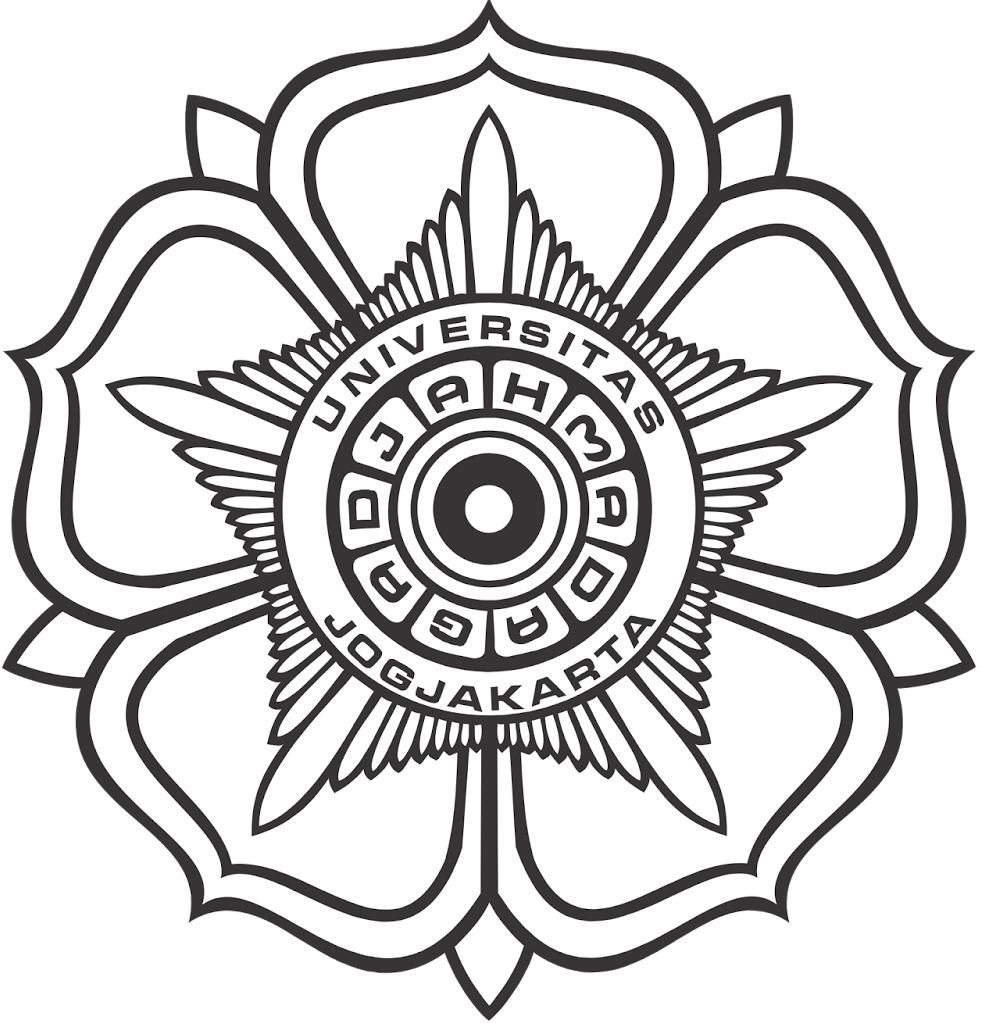Effects of pentagamavunon-0 on histaminemediated hyperresponsive airway in asthmatic models : in-vitro in-vivo
Abstract
Asthma is a chronic inflammatory airway disease involving reversible airway constriction and airway hyperresponsiveness (AHR) to allergens, airway edema, and increased mucus secretion tumor cells. To date, exploration of antiasthmatic drug is still being studied both from natural products or sinthetic processes. One of the sinthetic compound is pentagamavunon-0 (PGV-0) which possesses anti-inflammatory and inhibitory effects on histamine release from rat mast cells. The aim of the study is to look at the effects of PGV-0 on histaminemediated hyperresponsive airway in asthmatic models (in vitro and in vivo studies). In vitro study was conducted using isolated organ technique with isotonic transducer. The results have shown that PGV-0 could not inhibit the contraction of isolated guinea pig trachea induced by histamine. PGV-0 did not change the pD2 and Emax values of histamine on trachea smooth muscle. The finding indicates that PGV-0 does not have affinity and intrinsic activity on H-1 histaminergic receptor in trachea smooth muscle. In vivo study, we sensitized the rats with ovalbumin (OVA) to develop the airway hyperreactivity to histamine. Histamine level in bronchoalveolar lavage fluid (BALF) and airway tissue were determined using HPLC-fluorometry. Multiple exposures of ovalbumin significantly histamine level in BALF by 74.51±5.33 pmol/mL or 6-times higher than this of control saline group. Oral administration of PGV-0 (40 mg/kg BW) significantly decreased the histamine accumulation in BALF to 30 % of the value of control group in asthmatic rats. Besides, PGV-0 significantly prevented the histamine decrease in asthmatic rats to 37.8 % trachea, and 34.2 % in bronchus. However, PGV-0 did not succeed to prevent the histamine decrease in the lung of asthmatic rats. The result of the study may provide useful information for further discovering pharmacological synthetic compound for treatment of allergic inflammatory asthma.
Key words: asthma, curcumin, pentamavunon-0, histamine, airway hyperresponsiveness
Full Text:
PDF 90-99References
Barnes P. J., Chung K. F., and Page C. P., 1998, Inflammatory mediators of asthma: an update, Pharmacol. Rev., 50, 515–596.
Barnes P. J., and Liew F. Y., 1995, Nitric oxide and asthmatic inflammation, Immunol. Today, 16, 128–130.
Bochner B. S., and Busse W. W., 2005, Allergy and Asthma, J. Allergy Clin. Immunol., 115, 953-959.
Brunton L., Parker K., Blumenthal, and Buxton L., 2008, Pharmacotherapy of Asthma, In Goodman and Gliman’s Manual of Pharmacology and Therapeutics, The McGraw-Hill Companies Inc, Singapore. 464.
Di Bello M. G., Masini E., Ioannides C., Ndisang J.F., Raspanti S., Sacchi T. B., and Mannaioni P. F., 1998. Histamine release from rat mast cells induced by the metabolic activation of drugs of abuse into free radicals. Inflamm. Res. 47, 3, 122-130.
Hogan S. P., Koskinen A., Matthaei K. I., Young I. G., and Foster P. S., Interleukin-5-producing CD4+ T cells play a pivotal role in aeroallergen-induced eosinophilia, bronchial hyperreactivity, and lung damage in mice. Am J Respir Crit Care Med1998; 157, 210–8.
Holt P. G., Macaubas C., Stumbles P. A., and Sly P. D., 1999, The role of allergy in the development of asthma. Nature. 402, B12–7.
Kay A. B., 1991, Asthma and Inflammation, J. Allergy Clin. Immunol., 87, 893-910.
Kodak, 1961, Film-forming photosensitive polymers. Chem. Abstrs. 55, 11154h.
Liu S., Chihara K., and Maeyama K., 2005, The contribution of mast cells to the late-phase of allergic asthma in rats, Inflamm. Res., 54, 221-228.
Lomask M., 2006, Further exploration of the Penh parameter, Exp Toxicol Pathol., 57 (Suppl)2, 13-20.
Mannaioni P. F., Bello M. G. D., Raspanti S., Mugnai L., Romano V., and Masini E., 1996. Free radical mediated release of histamine from rat mastcells induced by drugs of abuse. Inflamm. Res. 45(suppl.1), S25-S26.
Masini E., Palmerani B., Gambassi F., Pistelli A., Giannella E., Occupati B., Ciuffi M., Sacchi B., and Mannaioni P. F., 1990., Histamine release from rat mast cells induced by metabolic activation of polyunsaturated fatty acidsinto free radicals. Biochem Pharmacol. 39, 5, 879-889.
Nugroho A. E., Sardjiman and Maeyama K., 2008, Inhibitory effect of 2,5-bis(4-hydroxy-3- methoxy benzylidene) cyclopentanone on mast cell histamine mediated-rat paw edema, 61th Annual Japanese Pharmacological SocietySouthwest Regional Meeting, Proceeding, Yonago Japan.
Nugroho, A. E., Ikawati, Z., Sardjiman, and Maeyama, K., 2009, Effects of benzylidenecyclopentanone analogues of curcumin on histamine release from mast cells, Biological Pharmaceutical Bulletin, 32, 5, 842-849.
O’Byrne P. M, 1998, Allergen-induced airway hyperresponsiveness, J. Allergy Clin. Immunol., 81, 119-127.
Rang, H. P., Dale, M. M., and Ritter, J. M., 2003, Pharmacology, 4th Ed., Churchill Livingstone, Melbourne.
Robinson A. T. W. , Phillips R. S., Severin A., Moncada S., and Liew F. Y., 1993, The role of TH1 and TH2 cells in a rodent malaria infection, Science, 260, 1931– 1934.
Sardjiman, 2000, Synthesis of a new series of curcumin analogues, biological activities and qualitative structure-activity relationships. Dissertation, Gadjah Mada University.
Sayah M. E, Filho V. C, Yunes R. A, Pinheiro T. R, and Calixto J. B, 1998, Action of Polygodial, a sesquiterpene isolated from Drymis winteri, in the guinea-pig ileum and trachea in vitro, European Journal of Pharmacology, 344 : 215-221.
Suzuki M., Nakamura T., Iyoki S., Fujiwara A., Watanabe Y., Mohri K., Isobe K., Ono K., and Yano S., 2005, Elucidation of anti-allergic activities of curcumin-related compounds with a special reference to their anti-oxidative activities. Biol Pharm Bull., 28, 8, 1438-1443.
Yamatodani A., Fukuda H., Wada H., Iwaeda T., and Watanabe T., 1985., High-performance liquid chromatographic determination of plasma and brain histamine without previous purification of biological samples : cation-exchange chromatography coupled with post-column derivatization fluorometry. J Chromatogr.344, 115-123.
DOI: http://dx.doi.org/10.14499/indonesianjpharm0iss0pp90-99
Refbacks
- There are currently no refbacks.
Copyright (c) 2017 INDONESIAN JOURNAL OF PHARMACY

This work is licensed under a Creative Commons Attribution-ShareAlike 4.0 International License.
Indonesian J Pharm indexed by:







































